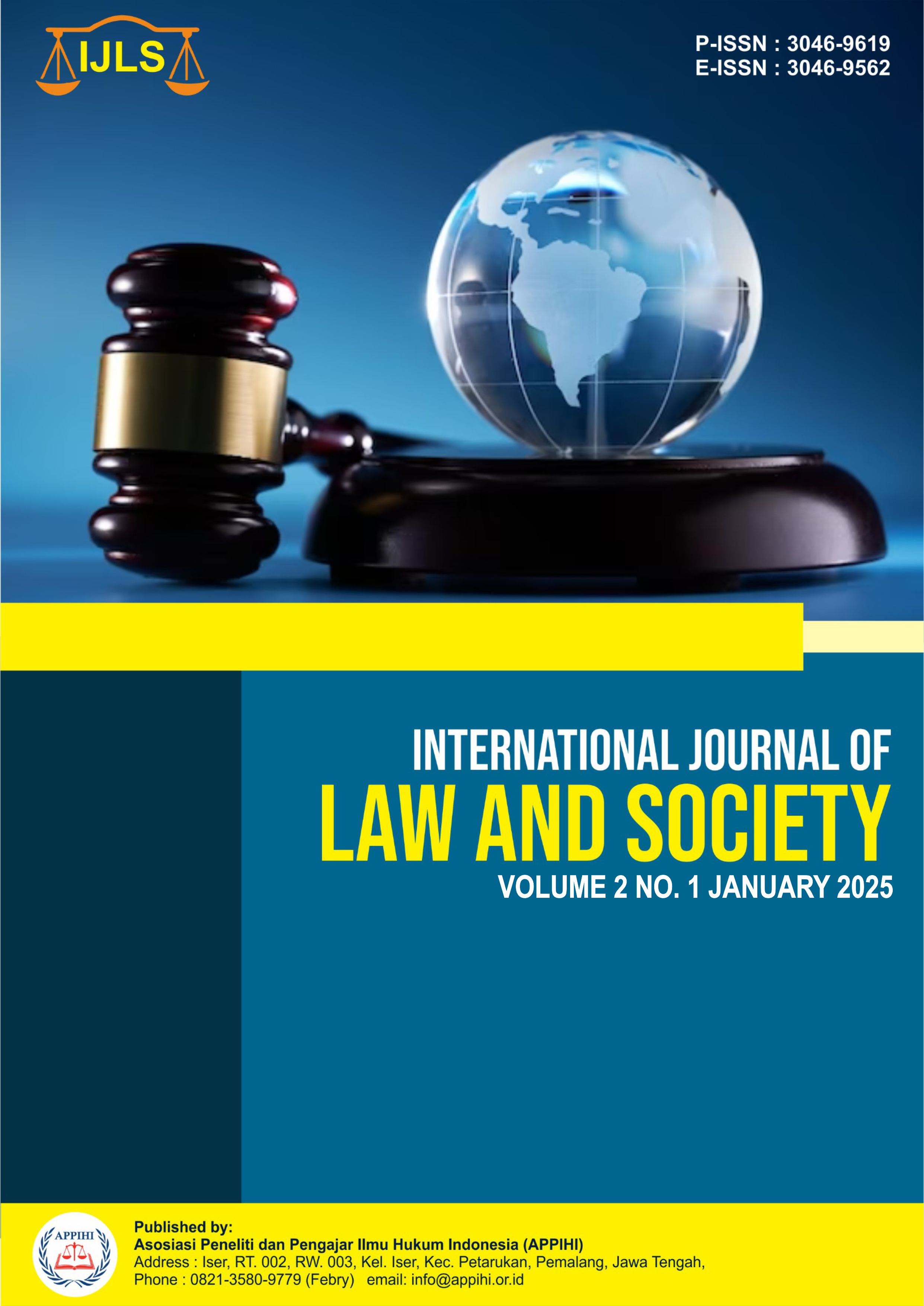Analysis Of The Judge's Decision On The Marriage Legalization Case Number: 143/Pdt.P/2021/Pa Sak At The Religious Court Of Siak Sri Indrapura In The Perspective Of Islamic Law
DOI:
https://doi.org/10.62951/ijls.v2i1.302Keywords:
marriage, itsbat, guardian muhakkamAbstract
There are two types of marriage guardians: first, nasab guardians, namely guardians whose guardianship rights are based on blood relations. Such as, his biological parents, or also wali aqrab and ab'ad (closest or distant relatives). Second, the wali hakim is a guardian whose guardianship rights arise because the bride's parents refuse (adhal) or are absent, or for other reasons that physically exist but the guardianship rights do not exist. The emergence of the Itsbat Nikah provision is also related to the issue of the status of marriage registration. There are two views on the issue of the status of marriage registration, the first view states that marriage registration is only an administrative requirement, not a condition for the validity of a marriage, so marriage registration is only a process of obtaining evidence that a marriage has been carried out by someone, while the second view states that marriage registration is a valid condition for marriage. In this discussion, the author focuses on the consideration of judges who grant itsbat nikah cases where the previous marriage was held using an unofficial guardian or not the KUA head. This is not in accordance with article 23 of the Compilation of Islamic Law “(1) The new guardian judge can act as a marriage guardian if the nasab guardian is absent or impossible to present or his residence is unknown or absent or adlal or reluctant”. The Applicant's marriage guardian in the marriage contract was another person (a local community leader named Selan) due to the Applicant's non-Muslim biological father. The judge considered it as follows: that a kiyai, cleric or community leader who acts as a marriage guardian in Islamic law is known as wali muhakkam, namely someone who is appointed by the prospective husband and wife to act as a guardian in their marriage.
Downloads
References
A. Rifai, I. Sodiq, and A. Muntholib, “History of Marriage Law from Opinion to Opposition from Society and the House of Representatives in 1973-1974,” J. Indones. Hist., vol. 4, no. 1, 2015.
A. Syarifudin, “Religion in the World,” Jakarta: Kencana, 2006.
AS Nst, “Marrying a Pregnant Woman Due to Zina Reviewed from Islamic Law,” J. Ushuluddin, vol. 17, no. 2, pp. 131–144, 2011.
F. Bafadhal, “Itsbat Nikah and Its Implications for Marital Status According to Indonesian Laws and Regulations,” J. Ilmu Huk. Jambi, vol. 5, no. 1, p. 43298, 2014.
H. Amiur Nuruddin & Azhari Akmal Tarigan, Islamic Civil Law in Indonesia: A critical study of the development of Islamic Law from Fiqh, Law Number 1 of 1974 to the Compilation of Islamic Law, Jakarta: Kencana, 2006, pp. 72-73.
I. Rusyd, IG Said, A. Zaidun, and A. Asrori, "Bidayatul mujtahid: analysis of the jurisprudence of the mujtahids," (No Title), 2007.
Khairuddin and J. Julianda, “Implementation of Mobile Marriage Confirmation and Its Impact on Orderly Marriage Registration (Case Study in Bireuen Regency),” SAMARAH J. Law. Kel. And Law. Islam, vol. 1, no. 2, pp. 319–351, 2017.
MDKD JUNIOR, “Review of Islamic Law and Positive Law Regarding the Guardianship of Adopted Children's Marriage by Adoptive Parents (Study at the Religious Affairs Office, Kotagajah District, Central Lampung Regency).” UIN RADEN INTAN LAMPUNG, 2022.
Mustofa Hasan, Introduction to Family Law, Bandung: CV Pustaka Setia, 2011, pp. 98-99.
N. Fadilah, “Analysis of the Cumulative Effectiveness of Marriage Validation Applications and Divorce Lawsuits,” TAFAHUS J. Pengkaj. Islam, vol. 2, no. 2, pp. 150–177, 2022.
N. Rodliyah, “Marriage registration and marriage certificate as the legality of marriage according to the compilation of Islamic law,” Pranata Huk., vol. 8, no. 1, p. 26714, 2013.
Novitasari, Siska Dwi. "Legal Consequences of Marriage Validation in the Perspective of Law No. 1 of 1974 Concerning Marriage and Islamic Law." Dinamika: Scientific Journal of Legal Science 26.4 (2020)
S. Sahrani, “Tihami. 2009,” Jurisprudence of Munakahat Kaji. Complete Jurisprudence of Marriage.
Soedharyo Soimin, Law of Persons and Families: Perspective of Western Civil Law/BW, Islamic Law and Customary Law, Jakarta: Sinar Grafika, 2010, p. 56
W. Zuhaili, "Islamic Fiqh waadillatuhu Volume 5," Jakarta Gema Insa., 2011.
Y. Zaidah, “Isbat nikah in the perspective of Compilation of Islamic Law in relation to the authority of Religious Courts,” Syariah J. Huk. and Pemikir., vol. 13, no. 1, 2014.
Zaeni Asyhadie, et al., Family Law According to Positive Law in Indonesia, p. 119.
Downloads
Published
How to Cite
Issue
Section
License
Copyright (c) 2024 International Journal of Law and Society

This work is licensed under a Creative Commons Attribution-ShareAlike 4.0 International License.





